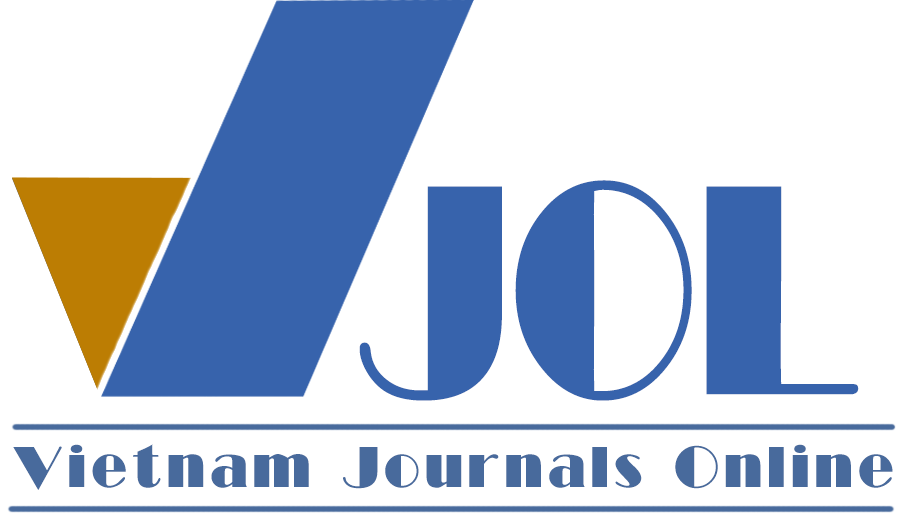The mediating role of organizational support in maintaining employee loyalty under job stress and legal risks: A case study of valuation service companies in Ho Chi Minh City
Authors
DOI: https://doi.org/10.57110/vnu-jeb.v5i5.473Keywords:
Job strees, organizational support, employee loyalty, legal risksReferences
Ahsan, N., Abdullah, Z., Fie, D. Y., & Alam, S. S. (2009). A study of job stress on job satisfaction among university staff in Malaysia: Empirical study. European Journal of Social Sciences, 8(1), 121-131.
Blau, G. (1981). An empirical investigation of job stress, social support, service length, and job strain. Organizational Behavior and Human Performance, 27(2), 279-302. https://doi.org/10.1016/0030-5073(81)90050-7
Caplan, R. D. (1987). Person-environment fit theory and organizations: Commensurate dimensions, time perspectives, and mechanisms. Journal of Vocational Behavior, 31(3), 248-267. https://doi.org/10.1016/0001-8791(87)90042-X
Cropanzano, R., & Mitchell, M. S. (2005). Social exchange theory: An interdisciplinary review. Journal of Management, 31(6), 874-900. https://doi.org/10.1177/0149206305279602
Eisenberger, R., Huntington, R., Hutchison, S., & Sowa, D. (1986). Perceived organizational support. Journal of Applied Psychology, 71(3), 500-507.
Eisenberger, R., Rhoades, S. L., & Wen, X. (2020). Perceived organizational support: Why caring about employees counts. Annual Review of Organizational Psychology and Organizational Behavior, 7(1), 101-124. https://doi.org/10.1146/annurev-orgpsych-01
Hair, J. F., Black, W. C., Babin, B. J., & Anderson, R. E. (2010). Multivariate Data Analysis (7th ed.). Pearson Prentice Hall.
Hu, L. T., & Bentler, P. M. (1999). Cutoff criteria for fit indexes in covariance structure analysis: Conventional criteria versus new alternatives. Structural Equation Modeling: A Multidisciplinary Journal, 6(1), 1-55. https://doi.org/10.1080/10705519909
Karasek, R. A. (1979). Job demands, job decision latitude, and mental strain: Implications for job redesign. Administrative Science Quarterly, 24(2), 285-308. https://doi.org/10.2307/2392498
Kelloway, E. K., & Barling, J. (1991). Job characteristics, role stress and mental health. Journal of Occupational Psychology, 64(4), 291-304. https://doi.org/10.1111/j.2044-8325.1991.tb00561.x
Kline, R. B. (2023). Principles and Practice of Structural Equation Modeling. Guilford Publications.
Koçoğlu S, M., & Görmezoğlu, Z. (2021). The role of perceived organizational support in the relationship between job stress and occupational commitment: Research on nurses working in a foundation university hospital. Bezmialem Science, 9(4), 65-71.
Krepysheva, A. M., Sergievskaya, A. A., & Storchevoy, M. A. (2020). Definition and measurement of risk in compliance management. Strategic Decisions and Risk Management, 11(2), 150-159. https://doi.org/10.17747/2618-947X-2020-2-150-159
Lazarus, R. S., & Folkman, S. (1984). Stress, Appraisal, and Coping. Springer Publishing Company.
Lee, T. K., Moon, H. W., & Kim, J. S. (2022). The effects of workers’ job stress on organizational commitment and leaving intention in commercial sports centers. Journal of Exercise Rehabilitation, 18(5), 294. https://doi.org/10.12965/jer.2244438.219
Liuzzo, G., Bentley, S., Giacometti, F., & Bonfante, E. (2014). The term risk: Etymology, legal definition and various traits. Italian Journal of Food Safety, 3(1). https://doi.org/10.4081/ijfs.2014.2269
Maslach, C., & Jackson, S. E. (1981). The measurement of experienced burnout. Journal of Occupational Behavior, 2(2), 99-113. https://doi.org/10.1002/job.4030020205
Moorhead, R., & Vaughan, S. (2015). Legal risk: Definition, management and ethics. Management and Ethics, 31. https://papers.ssrn.com/sol3/papers.cfm?abstract_id=2594228
Mowday, R. T., Steers, R. M., & Porter, L. W. (1979). The measurement of organizational commitment. Journal of Vocational Behavior, 14(2), 224-247. https://doi.org/10.1016/0001-8791(79)90072-1
Power, M. (2004). The risk management of everything. The Journal of Risk Finance, 5(3), 58-65. https://doi.org/10.1108/eb023001
Rhoades, L., & Eisenberger, R. (2002). Perceived organizational support: A review of the literature. Journal of Applied Psychology, 87(4), 698-714. https://psycnet.apa.org/doi/10.1037/0021-9010.87.4.698
Schauer, F. (2006). Profiles, Probabilities, and Stereotypes. Harvard University Press.
Schaufeli, W. B., & Bakker, A. B. (2004). Job demands, job resources, and their relationship with burnout and engagement: A multi-sample study. Journal of Organizational Behavior, 25(3), 293-315. https://doi.org/10.1002/job.248
Siegrist, J. (1996). Adverse health effects of high-effort/low-reward conditions. Journal of Occupational Health Psychology, 1(1), 27-41. https://psycnet.apa.org/doi/10.1037/1076-8998.1.1.27
Spector, P. E., & Jex, S. M. (1998). Development of four self-report measures of job stressors and strain: Interpersonal conflict at work scale, organizational constraints scale, quantitative workload inventory, and physical symptoms inventory. Journal of Occupational Health Psychology, 3(4), 356-367. https://doi.org/10.1037//1076-8998.3.4.356
Wayne, S. J., Shore, L. M., & Liden, R. C. (1997). Perceived organizational support and leader-member exchange: A social exchange perspective. Academy of Management Journal, 40(1), 82-111. https://doi.org/10.5465/257021
Downloads
Additional Files
Published
Abstract View
PDF Downloaded
How to Cite
Issue
Section
License
Copyright (c) 2025 Thành Vũ Bá, Đào Vũ Thắng, Ngô Văn Toàn

This work is licensed under a Creative Commons Attribution-NonCommercial 4.0 International License.
by VNU Journal of Economics and Business






